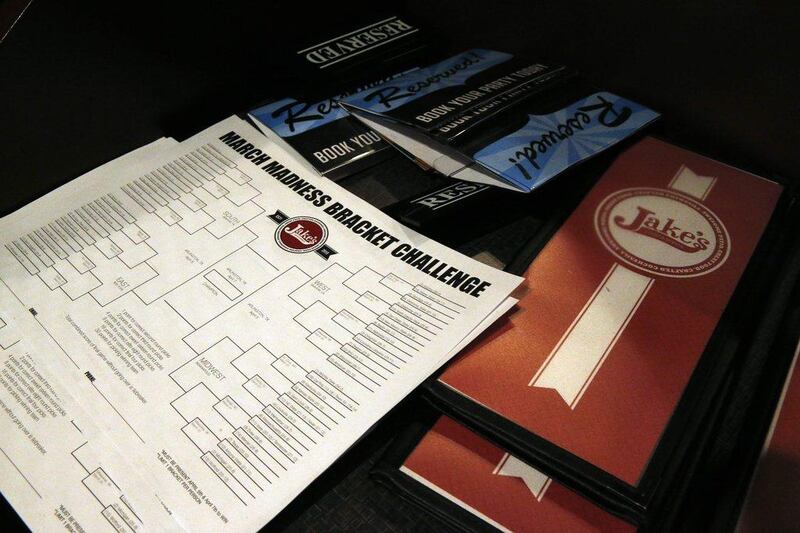Over the next three weeks, a peculiar syndrome will sweep over the United States, sending Americans into a collective tizzy as they ditch work, lay bets and obsess over something called “brackets.”
Welcome to the National Collegiate Athletic Association (NCAA) Division 1 Men’s Basketball Championship, better known as March Madness for the way it seizes the nation’s attention for the better part of a month.
Sixty-eight teams are vying for glory. On April 7, one will take the coveted NCAA title in Texas. And some of the stars of college basketball will quickly make their way to the professional ranks.
In the run-up to the final, millions of American sports fans will be glued to their TV screens and mobile devices, rooting for their alma maters. Some will back the well-funded traditional powerhouse teams and others the would-be Cinderellas looking to make a splash.
One such underdog is Mount Saint Mary’s, a small Catholic university of just 2,200 students located in rural Emmitsburg, Maryland.
The Mountaineers are hoping to be the first 16th-seeded team in NCAA history to win a game – on Tuesday in a preliminary “play-in” game against the State University of New York at Albany.
A win would send Mount Saint Mary’s to the tournament’s main draw, and a clash with the University of Florida Gators, a No 1 seed and two-time NCAA champions.
“There are going to be some major upsets, and that’s what people love about it,” Mountaineers coach Jamion Christian, 31, told AFP, explaining the tournament’s massive appeal.
“March Madness basically says that an ordinary guy, for one night, can be as good as any team in the country. It’s the American dream – being able to pick yourself up by the bootstraps and work yourself up to the top.”
Central to the March Madness insanity is the bracket – a multi-pronged diagram with the names of each team as they progress to the finals.
Guessing which team will go forward is a national obsession – known as “bracketology”.
This year, billionaire Warren Buffett, the nation’s best-known investor, and loan provider Quicken have teamed up to offer $1 billion to whoever correctly predicts every outcome right up to the NCAA final.
The odds of doing that successfully are put at nine quintillion to one – that’s nine followed by 18 zeros – and the prize money is to be paid out in 40 annual payments of $25 million, or a one-time lump sum of $500 million.
“We really pay no attention to that,” said NCAA tournament chairman Ron Wellman when asked about the Buffett bracket. “We have other things that we need to tend to at this point.”
One of the most-watched brackets comes from President Barack Obama, a well-known basketball fan and recreational player who posts his projections on the White House website.
So popular is March Madness that outplacement firm Challenger Gray and Christmas estimates companies could lose a whopping $1.2 billion for every unproductive work hour during the first week of the tournament.
“While March Madness distractions may not alter the nation’s quarterly GDP numbers, you can be assured that department managers and network administrators notice the effect on work output and company-wide Internet speeds,” said the firm’s CEO John A Challenger.
Most however need not worry about being fired: a survey by OfficeTeam, another job placement firm, found that 20 per cent of managers deem March Madness to be good for staff morale, labour lawyers Mintz Levin reported on its blog.
“The real reason why people like March Madness so much is because it gives them an opportunity not to have to work,” said John D’Argenio, athletics director at Siena College in New York state, which last participated in 2010.
Some fans just skip work altogether, feigning sickness to convene in bars with friends or stay at home to watch the action.
March Madness certainly is big business. CBS and Time Warner are paying $10.8 billion for the rights to telecast every game until 2024. Some of that money goes back to the universities.
For players like Mount Saint Mary’s senior guard Sam Prescott, a 23-year-old communications major from Philadelphia, the value of March Madness cannot be measured in dollars and cents.
“It’s a tremendous honour to be considered one of the elite and playing in March Madness,” Prescott told AFP before packing his bags and joining his teammates for an early-morning flight to Ohio for the game against Albany.
“College basketball is one of the purest things you can watch. You see young kids coming up. They don’t have big names or anything. They play the game to the fullest and work really hard. I think people appreciate that.”
Follow us on Twitter @SprtNationalUAE





